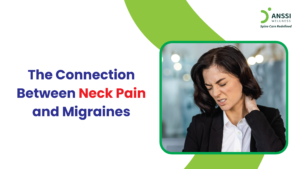Lower back pain is not a one-size-fits-all condition. Though it is a common health concern across all age groups, the causes and solutions differ significantly based on age. If you are someone suffering from lower back pain, understanding these differences can be extremely useful.
Let’s discuss how age affects spinal health to identify effective treatments and preventive strategies appropriate for someone like you.
Young Adults
Young adults (20–40 years) often experience lower back pain due to muscle strain, overuse, or injuries caused by sports and physical activities. Prolonged sitting, improper lifting techniques, and poor posture are also contributing factors. These issues typically stem from an active lifestyle or occupational habits that put stress on the spine.
Treatment:
- Rest and ice/heat application to reduce inflammation
- Core-strengthening exercises and stretching to improve spinal support
- Education on proper posture and ergonomics to prevent recurrence
Middle Age
For middle-aged adults (40–60 years), lower back pain often results from degenerative changes in spinal discs and the cumulative effects of sedentary lifestyles, poor ergonomics, and stress. Disc degeneration leads to reduced cushioning between spinal vertebrae, causing stiffness and chronic pain. Weight gain and lack of physical activity further strain the spine.
Treatment:
- Lifestyle modifications, such as regular low-impact exercise, maintaining a healthy weight, and ergonomic adjustments
- Stress management techniques to reduce tension-related pain
- Non-invasive therapies like physical therapy, massage, and spinal decompression
Older Adults
Lower back pain in older adults (60+ years) is often linked to age-related conditions such as arthritis, osteoporosis, and spinal stenosis. Arthritis causes joint inflammation, while osteoporosis weakens bones, increasing the risk of fractures. Spinal stenosis narrows the spinal canal, compressing nerves and causing radiating pain.
Treatment:
- Anti-inflammatory medications and physical therapy for arthritis
- Supplements containing calcium and vitamin D to strengthen bones
- Advanced treatments like non-surgical spinal decompression or, in severe cases, surgical intervention
How Age Affects Spinal Health
Spinal health declines with age due to wear and tear, reduced bone density, and less flexibility in ligaments and muscles. Younger individuals often face acute injuries, while middle-aged and older adults experience chronic or degenerative conditions.
Prevention for All Age Groups
Whether you’re a young adult, middle-aged, or elderly, early intervention and appropriate care can significantly enhance your quality of life and prevent long-term complications.
You can take a few proactive steps to maintain your spinal health:
- Regular exercise tailored to your age and fitness level
- A balanced diet high in vitamin D and calcium
- Proper lifting techniques and ergonomic setups at work
- Avoiding prolonged sitting or poor posture
About ANSSI:
ANSSI Wellness focuses on improving the quality of life for patients suffering from spinal issues, aiming to provide relief where other conventional treatments have failed. Through advanced non-surgical spinal decompression treatment, ANSSI is committed to helping patients avoid surgery and recover in a safe, effective, and compassionate environment.



